Ah the 1980’s when cars and cameras still had edges and when certain camera companies had the courage to design and produce unusual cameras. Case in point are these fraternal twins: the Ricoh Mirai and the Olympus AZ-4 Zoom.
I think the design goal was quite clear: design a compact, high quality camera with a long (for the time) zoom and a large amount of automation. It was designed and marketed as a solution to carrying an SLR and a bag of lenses. A three page fold out spread in Popular Photography Magazine had the bold headline: Take pictures without paraphernalia. It continued saying: You no longer have to carry the world on your shoulders to photograph it. It was all clearly marketed as a high quality do-it-all travel camera but I think it is possible the marketing people weren’t quite expecting the shape that the designers came up with. (By the way, the February 1989 edition of Modern Photography has a great review and full testing of the Ricoh Mirai, as does the July 1989 issue of Popular Photography which is available on Google Books.)
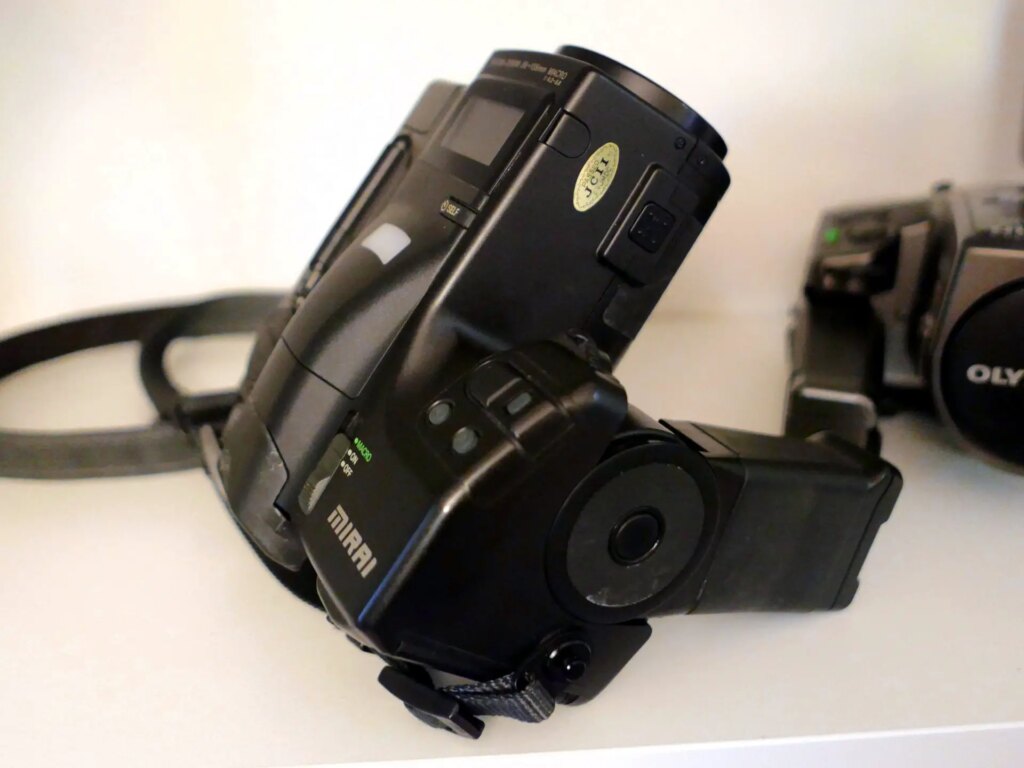
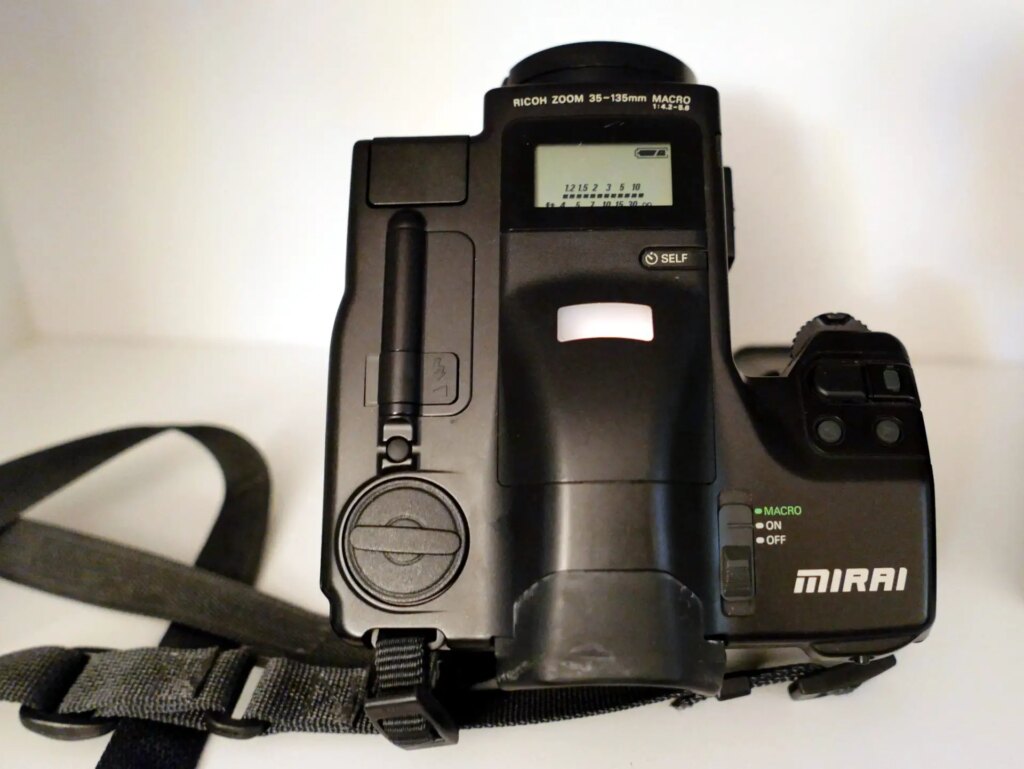
The Looks
To say that the Ricoh Mirai and Olympus AZ-4 have quirky looks is an understatement. They certainly look like no other SLR camera of the time and they appeared when compact point and shoot cameras were still small, somewhat simple bricks. But I imagine Ricoh and Olympus looked at the Chinon Genesis, the Yashica Samurai and Olympus’s own PowerZoom and decided to get join, or really create, the trend for what we would now call, bridge cameras. Olympus would eventually call these ZLRs for zoom lens reflex cameras and this would lead to their exemplary IS-1/IS-100 to IS-3/IS-300 models. Even Canon would briefly join the fray with their Photura model of 1990.
But the Ricoh Mirai and the Olympus AZ-4 got the first good press not because of the quirky looks but, I think, because the internals were just as quirky and while many photographers scoffed at the very sight of the cameras, others who actually held and used the cameras came to the conclusion that all the quirkiness, internal and external, actual worked quite well together.
Ignore the Looks
The first thing you realize when you pick up one of these cameras is the density. They are not large, but they weigh some 1070 grams in a body that is 127mm by 140mm by 82.5mm. Despite the plastic they feel solid and well built.
The second thing you need to figure out is how to hold the thing. Here I think the designers were quite brilliant. On the right is a folding handle with multiple angles it can lock into. Folded in you can hold the camera like a pair of binoculars. Folded all the way down to 75 degrees and your three fingers wrap comfortably around the handle while your forefinger sits easily on the shutter and a few other buttons. You still want your left hand for support because of the weight although one handed shooting is certainly doable, especially if you have the optional grip belt that goes around your hand like video cameras of the day.
At first glance the buttons too seem randomly arranged and to some extent they are. The zoom toggle, shutter, program shift up and down, and the reset buttons are all together in easy reach of your forefinger. The self-timer is perched on top near the LCD panel and the spot metering button (for the AZ-4) or the fill-in flash button (for the Mirai) is on the top left near the flash deployment button. Hidden behind a plate on the left are lesser used buttons for continuous shooting, exposure compensation, manual rewind, fill-in flash and double exposure (for the AZ-4) and center weighted mode and bulb mode (for the Mirai). These function changes along with the color and some body shape changes make the cameras fraternal rather than identical twins.
Hidden on the bottom of the camera are switches for sound (focus confirmation) and auto and manual focus. For manual focus you must switch it on and then hold down an MF button with your left finger from underneath (the button is on the right side of lens barrel) and use the zoom toggle to sloooowly focus. It works but the camera was designed mainly as an advanced point and shoot with autofocus and program exposure.
How Does it Work?
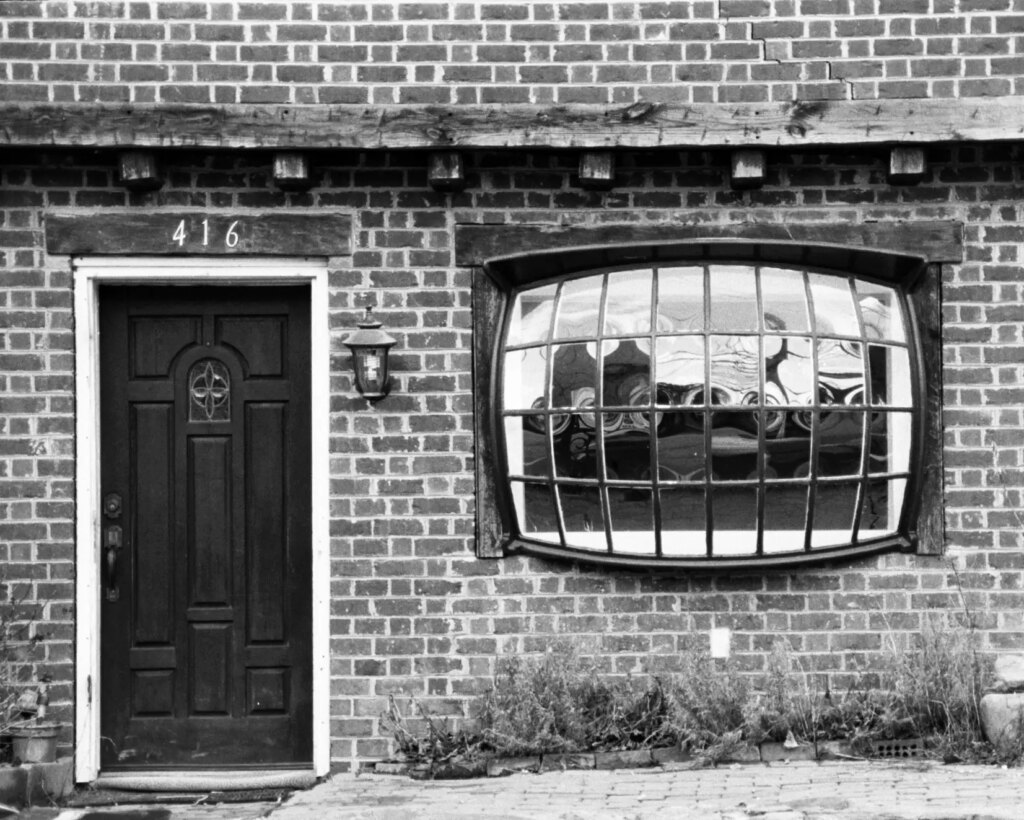
It works quite well, actually. Despite the slow lens (35mm-135mm, f4.2-f5.6, 15 elements in 13 groups) and the unusual pentaprism arrangement (angled to avoid the pentaprism bump but still a true prism), the viewfinder is large and bright and most of the information you need is clearly shown on the viewfinder lower frame. Information on shooting modes, film exposures, and focus distance is shown on the LCD panel on top of the camera.
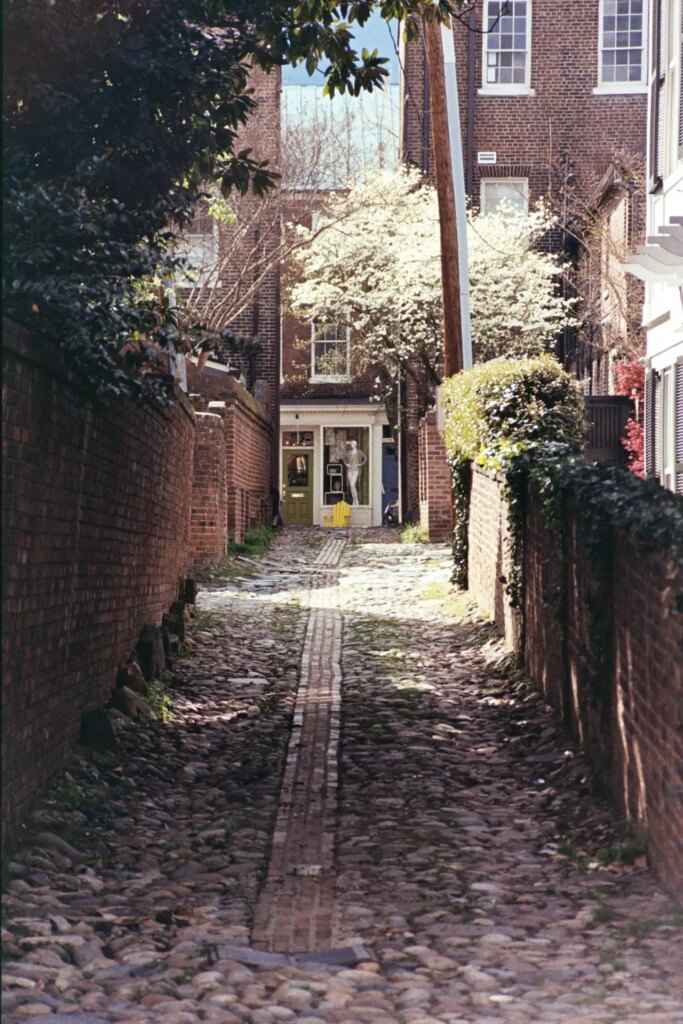
The auto focus provide by the Ricoh Mirai and Olympus AZ-4 is slow and noisy but accurate; typical of the era. The zoom is noisy and slow and is actually a varifocal lens, not a true zoom. Yes it all slows you down a bit compared to modern cameras, but not annoyingly so.
The specifications are fine for their time: focal plane shutter from 1/2000 to 32 seconds, AE lock, auto film loading, leader-out rewind (if you’re fast enough on the button), DX reading, self timer, flash, and an optional 1.5 teleconverter.
Image Quality
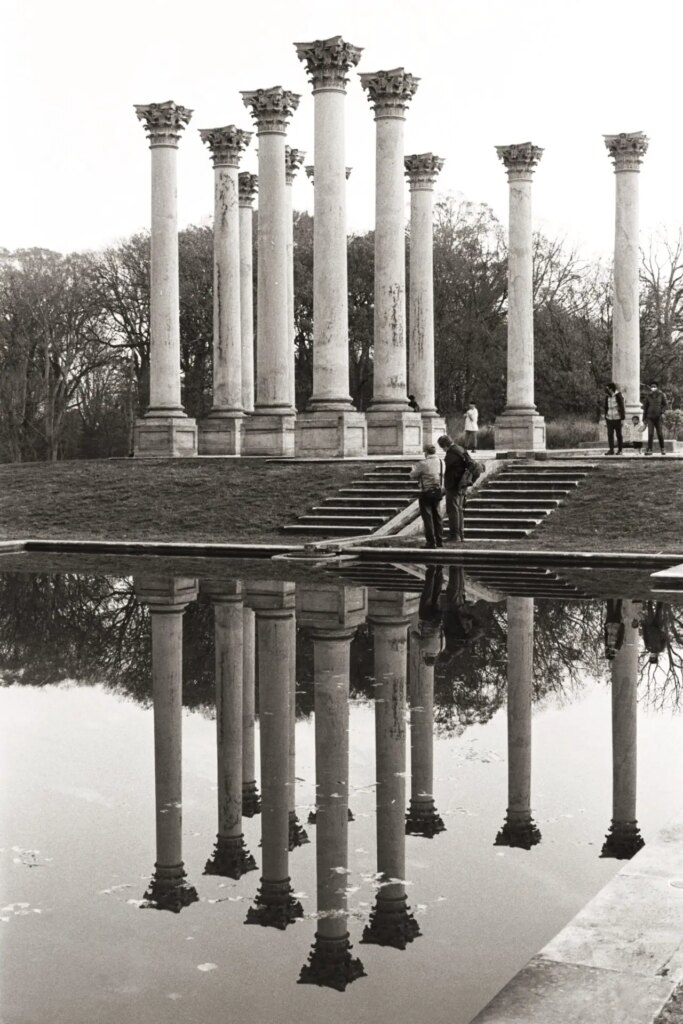
Let’s face it, our favorite cameras are rarely the best ones. At least that is the case here for me. The Ricoh Mirai and the AZ-4 Zoom (come on, Olympus, you could’ve done better with the name) produce fine images, better than most of the compact cameras of the day but not quite up to, say, an OM-2 with Zuiko glass.
Contrast is fine and bokeh is there, sort of, at the end of the zoom range.

Exposure is usually quite accurate. The Ricoh Mirai defaults to what they call the Automatic Backlight Control (ABLC) with the option for center-weighted mode. I haven’t seem much of a difference in the modes. The AZ-4 has the more traditional center-weighted mode with spot metering available. I generally trust the metering and just use program shift if I need a particular aperture or shutter speed for the photo. Works just fine. Besides, the only other option is exposure compensation (-4 to +4); there is no aperture or shutter priority or manual modes.

In short, in good light the lens is capable of very good images but perhaps not spectacular ones.

A Few More Tricks
I’ve described most of the features of these cameras that are common to other, more conventional cameras of that era, but I think the designers were simply having too much fun and they went a bit further, much to my constant delight.
For the Ricoh Mirai in bulb mode, the elapsed seconds are shown on the top LCD panel. No need to count or consult your watch. But with an automatic shutter speed down to 32 seconds, bulb is rarely needed – probably why the AZ-4 went with double exposure instead of bulb mode.
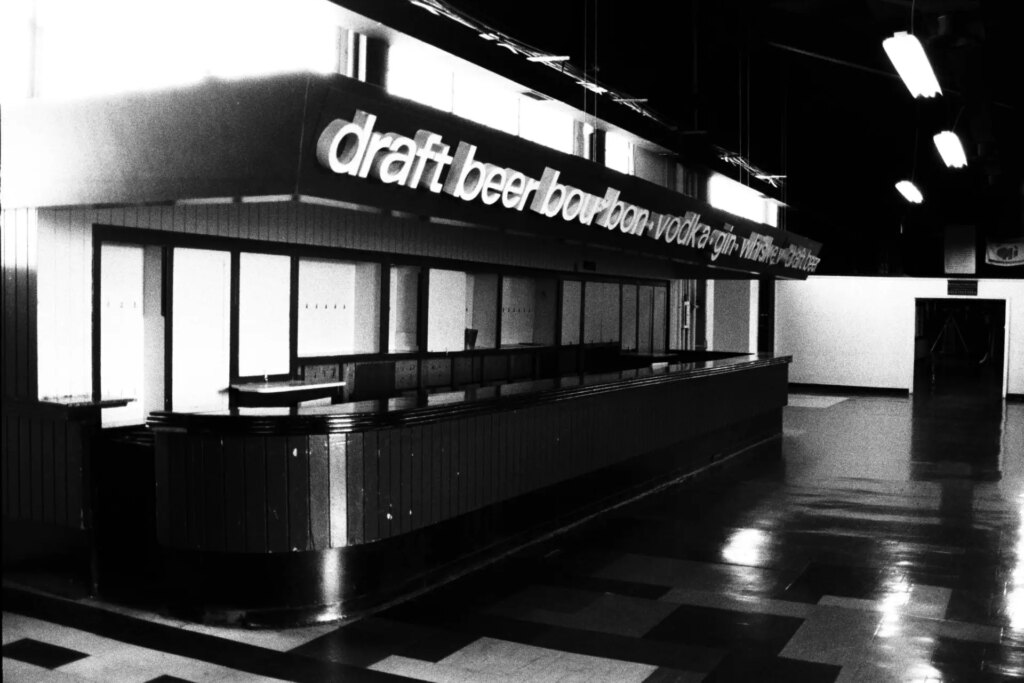
There is a marginal macro mode allowing manual focus between 0.49 and 1.2 meters. Problem is, that is the last detent in the on/off switch so that mode is often accidentally switched on. A little practical joke from the designers. Speaking of power, the camera can take either a CR-P2 battery or four AAA batteries; most convenient.
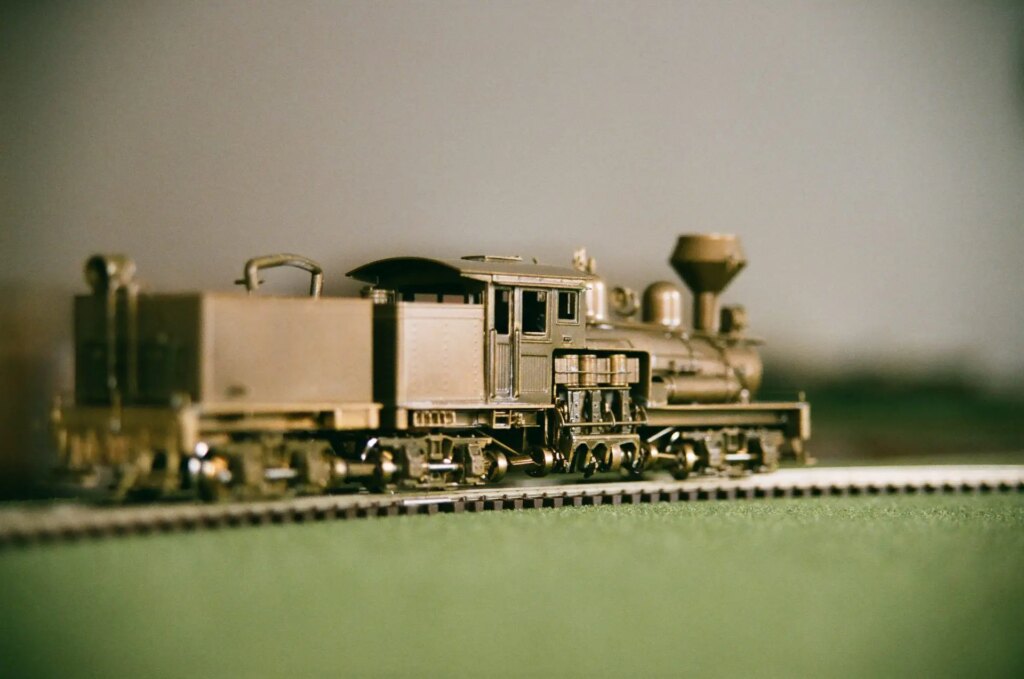
Another joke perhaps, but one best for your portrait subject, is the flash. Move the button to the left and with a bang a rectangular box holding the flash tube jumps out and up. It seems too violent a movement for the flash to survive long, but I have yet to see a broken one. By the way this is a flashmatic system based on distance so the flash won’t be fooled by high contrast subjects. There is also an optional higher power proprietary flash that is TTL and adds to the quirky looks.
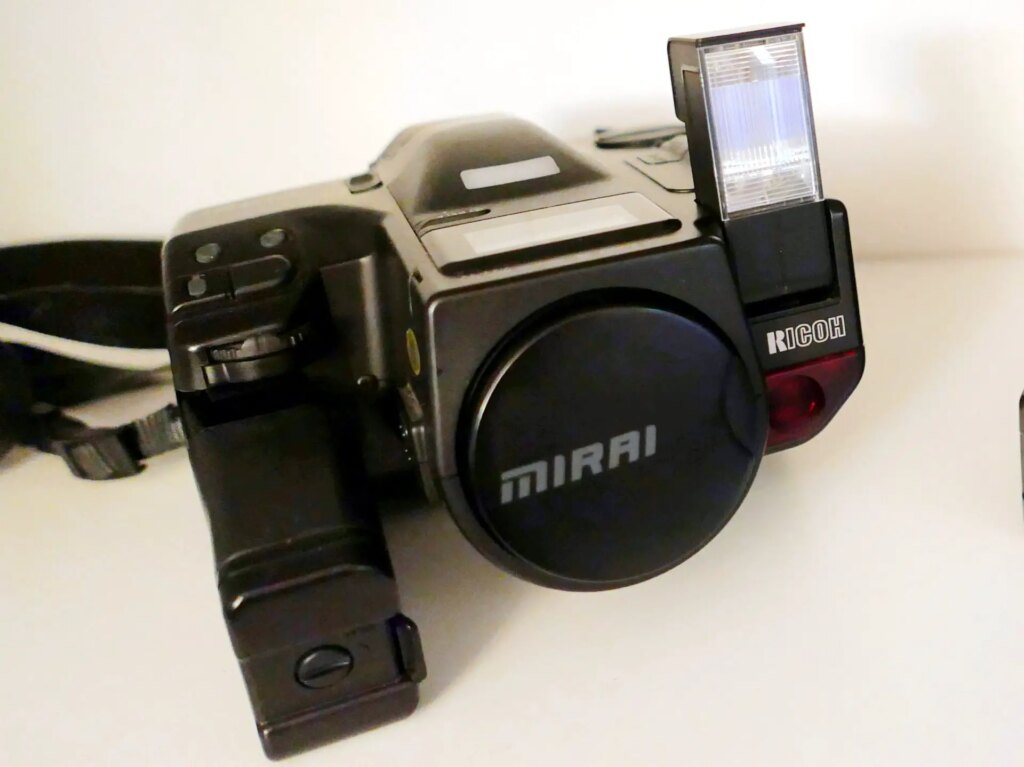
Finally, two things that I wish more cameras had even today. First is a readout of the focus distance in both automatic and manual focusing; a very useful feature for quick focus checks. Second is a small green button that resets the camera back to normal default shooting modes. To this day I think only Pentax has this feature (also a green button) but I find it more and more desirable as cameras get more and more complicated.
Conclusion

Is it because of quirkiness that I love these cameras so? Perhaps. After all, I was once the proud owner of a Renault LeCar and an AMC Pacer. Maybe it is just because the Ricoh Mirai and Olympus AZ-4 Zoom were early acquisitions in my collections and they imprinted themselves on me. Perhaps they just fit me better than almost any other camera. Whatever the reason, I’ll keep using and enjoying them and I have enough spares to hopefully carry me through until the end of my photographic journey.
Thanks for reading. You can find me on Flickr, my photo website: www.davidtellet.com, and once in a while I’ll post on: www.badengineering.org .
Share this post:
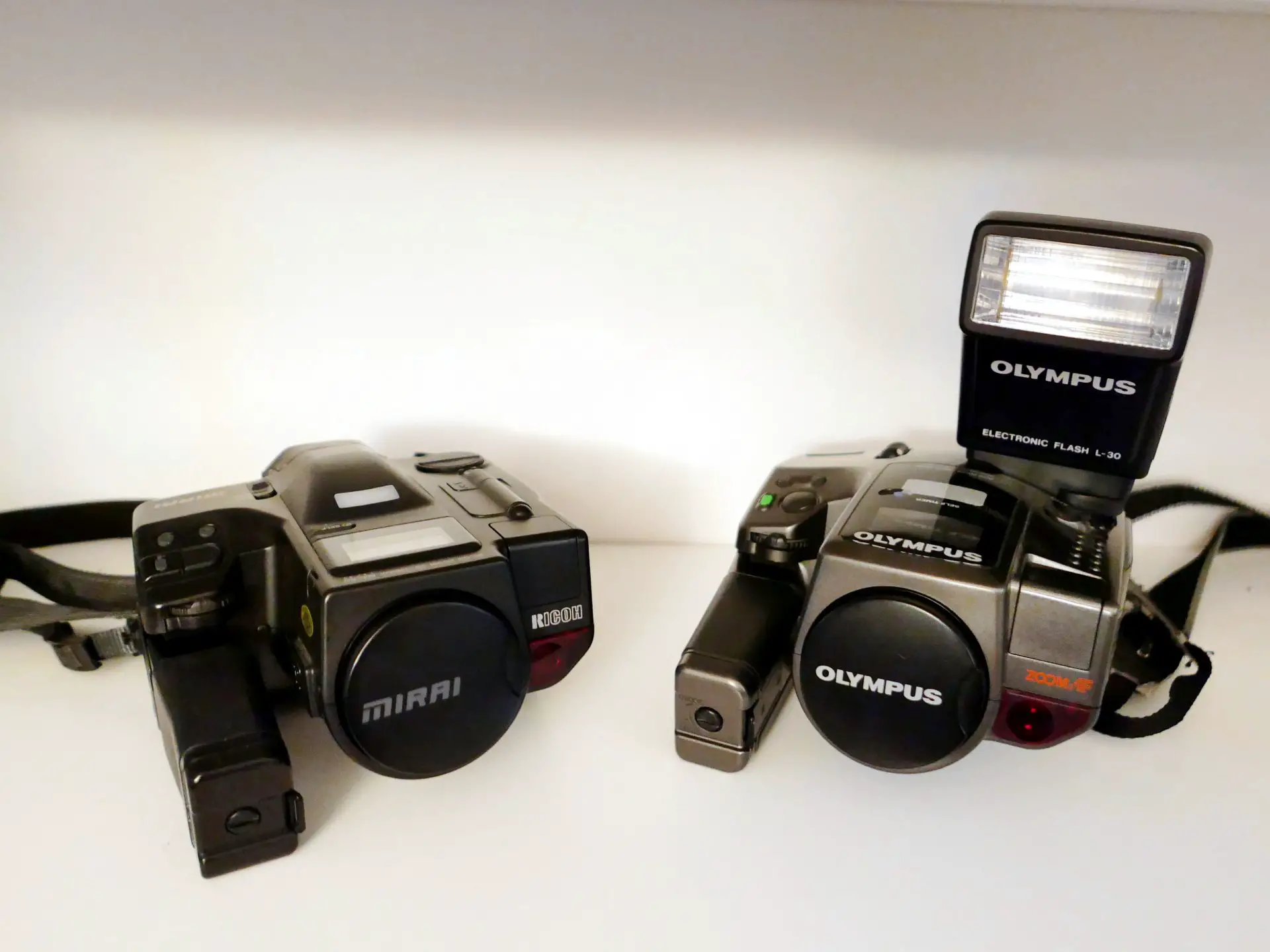








Comments
Andy on Ricoh Mirai & Olympus AZ-4 Zoom Review – Fraternal Twins – By David Tellet
Comment posted: 16/08/2022
And I still own a Renault 5 :)
Comment posted: 16/08/2022
Rock on Ricoh Mirai & Olympus AZ-4 Zoom Review – Fraternal Twins – By David Tellet
Comment posted: 18/08/2022
Comment posted: 18/08/2022